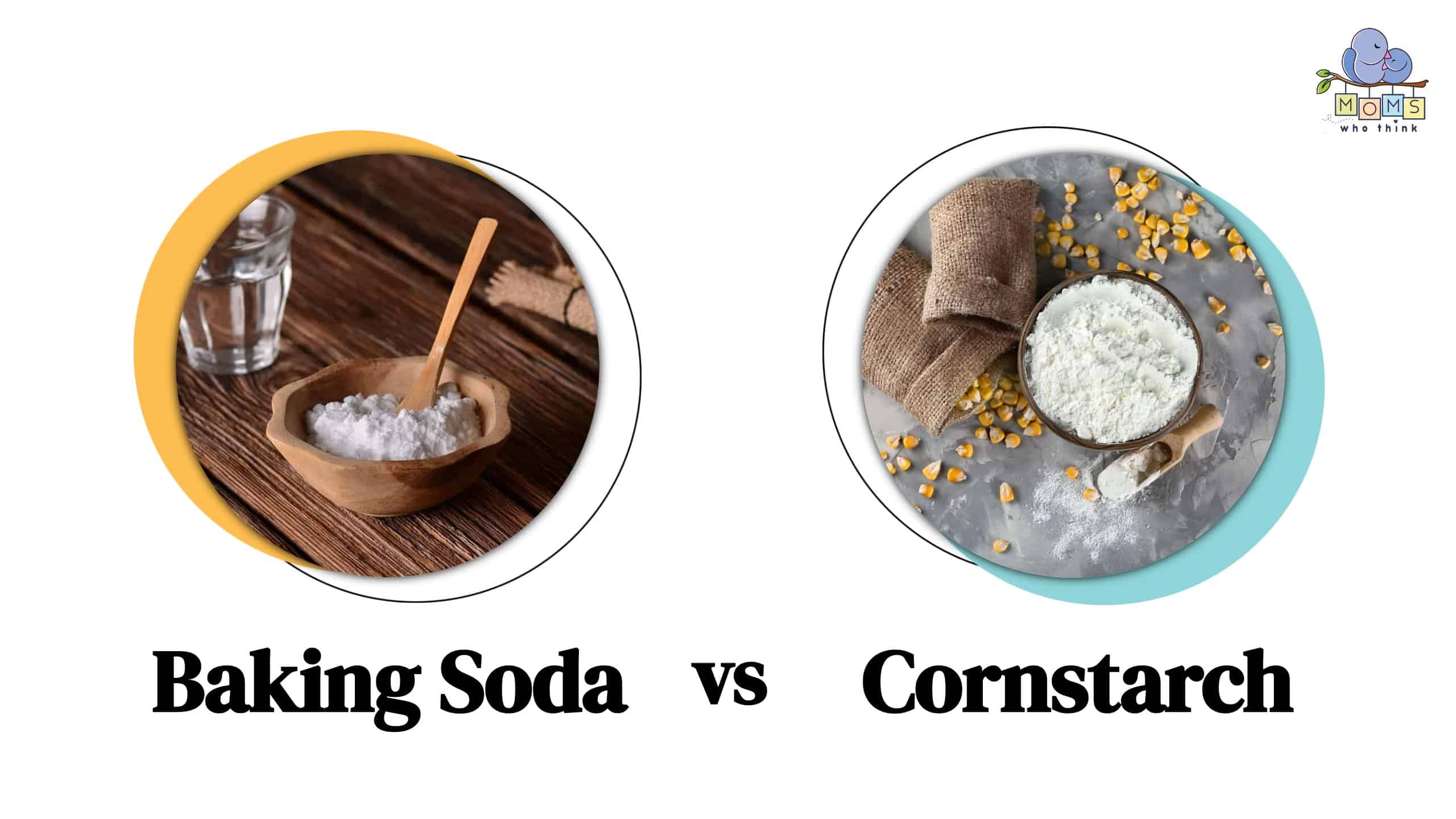The kitchen is one unique space containing essentials for cooking, baking, and food creation in general. Baking soda and cornstarch are among the many kitchen ingredients that may or may not sound familiar. However, they are helpful in making several dishes and doing other things like cleaning.
Though slightly similar, these two ingredients have significant differences. Baking soda is a leavening agent used in dough to make it rise, while cornstarch is a thickening agent ideal for soups, gravy, and sauces. It also coats fruits used in tarts, pies, or desserts and keeps them solid without a watery texture. This post explains more about baking soda and cornstarch, their uses, differences, whether you can interchange them, and their substitutes.
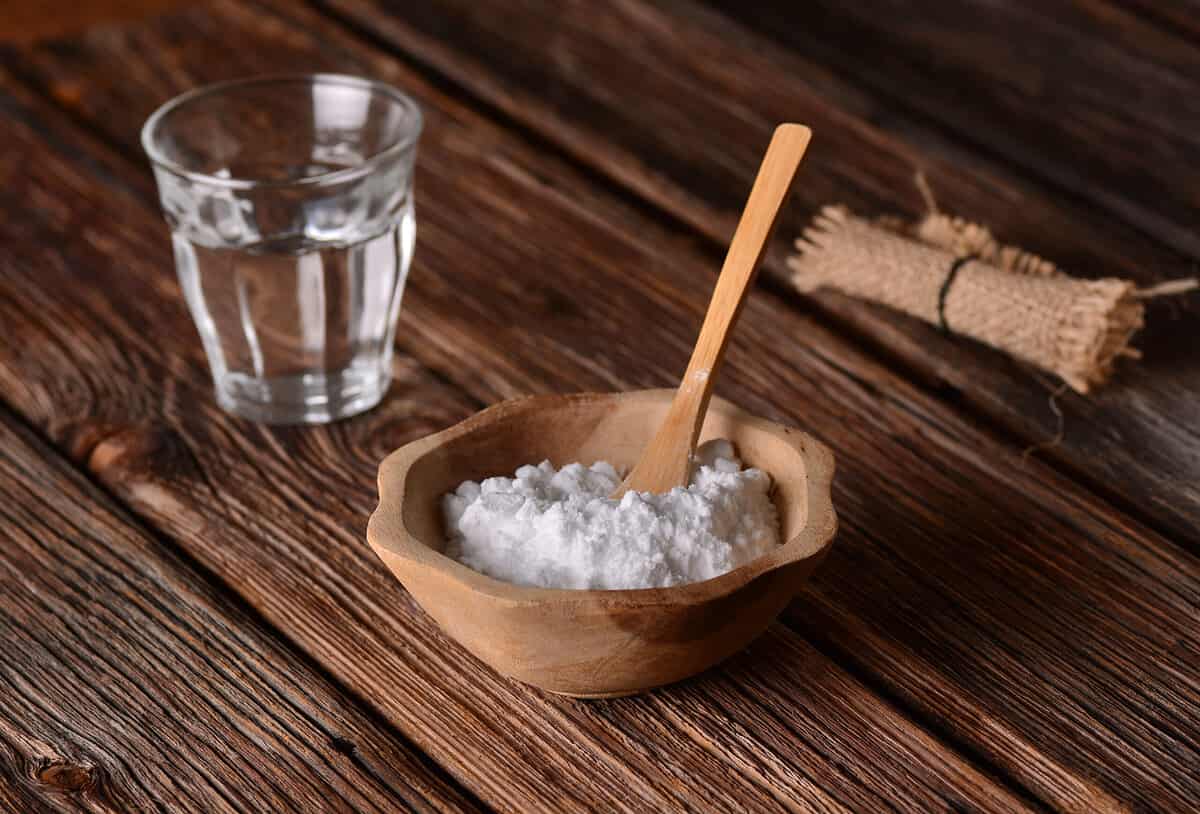
©al1962/Shutterstock.com
Differences Between Baking Soda and Cornstarch
The primary difference between baking soda and cornstarch is that baking soda is a leavening agent in baking that leads to a rise in baked goods, while cornstarch is a thickening agent for sauces, soups, and gravy since it absorbs water well.
Appearance-wise, baking soda looks more like salt, while cornstarch resembles flour. If you take a pinch of baking soda and rub it between your fingers, it feels gritty due to the tiny granules.
Cornstarch is very fine and slippery on the fingers. This is one of the easiest ways to differentiate the two if you have them in containers without labels. Another method is by adding vinegar to a little of each of the ingredients. Baking soda will immediately fizz, while cornstarch will not.
Cornstarch has a mild taste that you can hardly recognize when it comes to taste and flavor. It's great because it doesn't alter the taste of a dish and only thickens it to your preferred consistency. Baking soda, on the other hand, tastes terrible! It's not something you'd want to have in the mouth raw. Fortunately, you don't taste it once the food or baked dish is done; however, too much can make the item salty since it's alkaline.
What Is Baking Soda?
Baking soda is a prevalent leavening agent often used in homes and restaurants, just to name a few. It's great for baked goods as it helps the dough rise before baking. Baking soda, also called sodium bicarbonate, falls under the chemical category. It's also a salt since it comprises sodium cation and bicarbonate anion, which give it its properties.
You can trace the use of baking soda from way back in the 1940s when it was produced for the first time. Baked goods such as bread were common then, and the ingredients couldn't be missed in the mix. Up to date, it's still a staple in many households, waiting for the right time to be put to use. You can use it for cooking or baking, but the latter is the most notable way. Due to its alkaline nature, baking soda helps reduce acidity in sauces or soups.
A significant component of sauces is tomatoes. Tomatoes are known for their acidity in food, mainly when used in large numbers. Baking soda helps reduce or neutralize the dish, making it ideal for everyone, but using it gives the food a different flavor.
What Is Cornstarch?
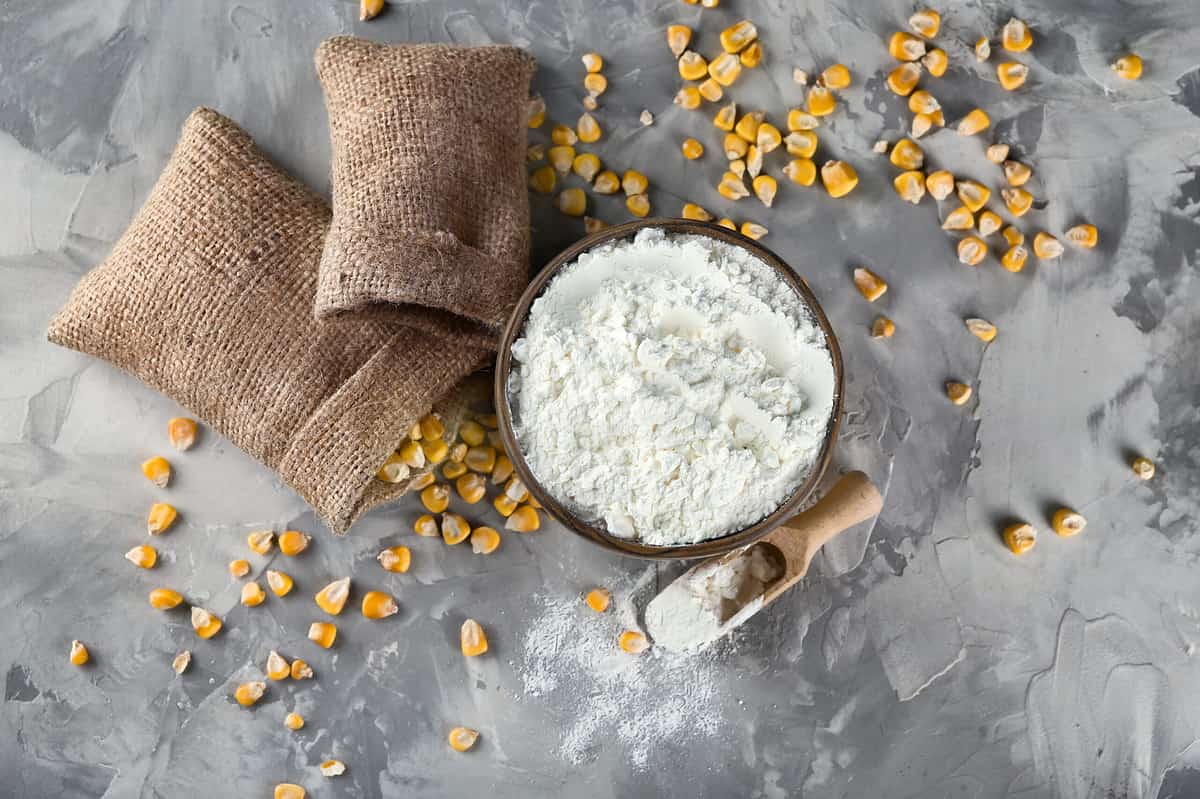
©Africa Studio/Shutterstock.com
Cornstarch, also known as corn flour, is starch obtained from corn. The corn kernel is the star of the show during corn flour processing. Within these kernels are white endosperms situated at the core. The endosperms go through the grinding process to produce a white powder that's fine and smooth. The powder, now called cornstarch, is the thickening agent in stores of different brands and sizes. Cornstarch is gluten-free, with carbohydrates and no proteins. It means anyone avoiding protein foods or who's allergic to them can comfortably use them in their kitchen to create delicious meals.
Can You Use Baking Soda and Starch Interchangeably?
Though slightly similar in appearance, these are one of those ingredients you cannot replace with the other. They function differently and cannot do what the other does. When baking soda combines with acid and is put on heat or exposed to it, a chemical reaction develops, causing the baked item to rise. The same thing cannot happen with cornstarch. If you add cornstarch while baking, whatever you are making will not increase or double in size.
Similarly, baking soda will not cause soups or gravies to thicken. Instead, it will start to bubble and foam and affect the flavor of the food. Baking soda leaves a salty/metallic taste to the food that is quite displeasing. Understandably, accidents happen in the kitchen. You may accidentally add baking soda to your soup but don't discard it. You can use vinegar to neutralize the taste by adding small amounts while stirring. Keep doing this until you no longer taste the baking soda saltiness.
Print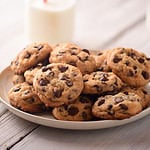
Chewy Chocolate Chip Cookies
Description
This chewy chocolate chip cookie recipe is for those who don't like their chocolate chip cookies to lose their softness, even when they've been out of the oven for a while. So, grab your apron and your baking sheet, and let's start making these chewy chocolate chip cookies.
Ingredients
- 1 cup unsalted butter, melted
- 1/4 cup granulated sugar
- 1 1/4 cups packed light brown sugar
- 1 tablespoon vanilla
- 2 eggs
- 2 cups, plus 2 tablespoons of all-purpose flour
- 1/2 teaspoon baking soda
- 1/2 teaspoon salt
- 1 cup coarsely chopped nuts, optional
- 1 (12 ounces) package of semi-sweet chocolate chips
Instructions
- Start by preheating the oven to 375 degrees Fahrenheit.
- In a large bowl, beat butter, vanilla, granulated sugar, brown sugar, and eggs with an electric mixer on medium speed.
- Slowly stir in flour, salt, and baking soda until a stiff dough forms.
- Stir in chocolate chips, and if using nuts be sure to add those now.
- Drop dough by rounded tablespoons onto an ungreased cookie sheet, approximately 2 inches apart.
- Bake for about 10 to 12 minutes. Cool for 1 to 2 minutes then finish cooling on a wire rack.
What Is a Good Substitute for Baking Soda?
The best replacement for baking soda is another leavening agent. It will help give the same effects without interfering too much with flavors. An excellent leavening agent is baking powder, but you must use it in large amounts since it's not as strong as baking soda.
What Is a Good Substitute for Cornstarch?
Many ideal condiments can replace cornstarch and are easy to find once you understand how they work. They include;
Flour and water
A combination of flour and water is one of the best cornstarch substitutes. Cornstarch thickens soups, marinades, or gravy, and flour does the same. Wheat flour is the most popular for this and seems like a healthier version of cornstarch. It has more protein, fiber, vitamins, minerals, and fewer carbohydrates. But this means those who prefer gluten-free foods cannot use this option.
Also, you'll use more wheat flour than you'd typically use cornstarch to achieve the right consistency. Unlike cornstarch, which you add directly to the cooking sauce, you must first mix the wheat flour in warm water and whisk to remove lumps before adding it to the food.
Comparison of Baking Soda vs. Cornstarch
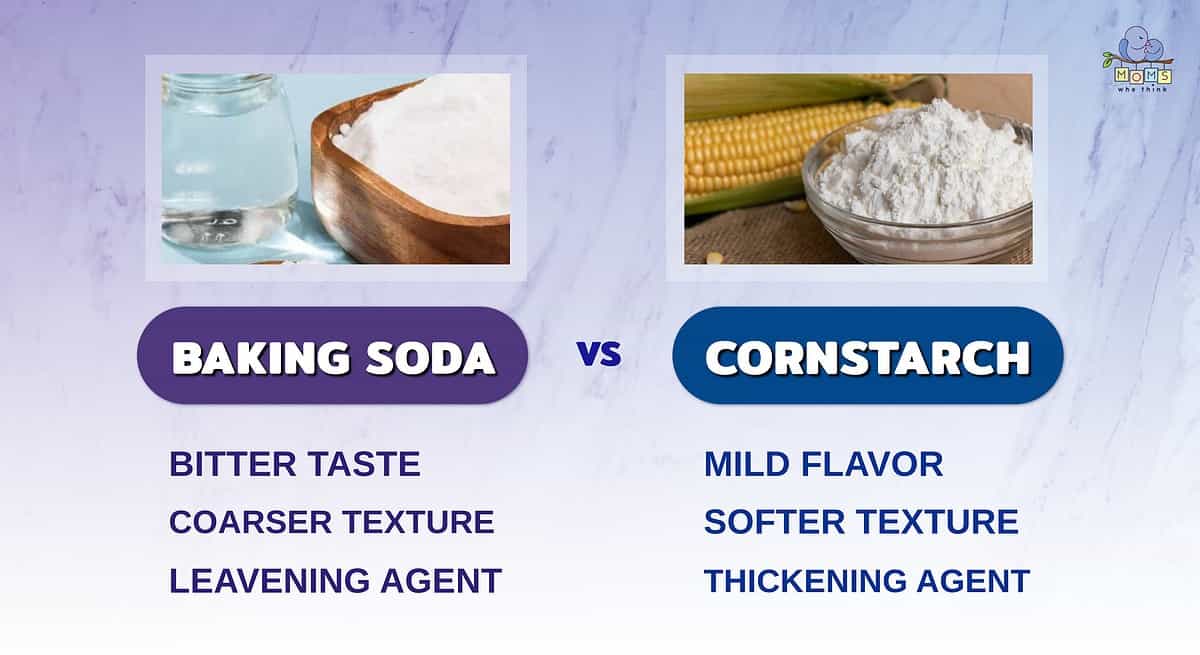
Now that you've learned about how you can use cornstarch and baking soda let's do a quick recap to find out how these two household items differ:
- Baking soda is a more versatile product that can be used in baking and cleaning. Cornstarch is typically less versatile and is used to thicken foods.
- Cornstarch has a more mild flavor, whereas baking soda is more bitter.
- Similar to the texture of flour, cornstarch has a softer feel, while baking soda is somewhat coarse.
